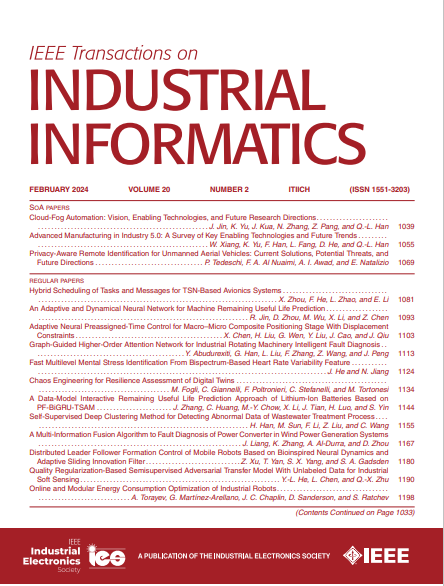同步电机状态相关神经链模型
IF 11.7
1区 计算机科学
Q1 AUTOMATION & CONTROL SYSTEMS
引用次数: 0
摘要
磁链图(FLMs)通常用于同步电机的高精度控制和建模。常用的方法通常只考虑FLM对定子电流的依赖性,允许在查找表或神经网络中方便地表示。然而,磁链还取决于速度、位置和其他状态变量。虽然这在形式上很简单,可以作为FLM神经模型的额外输入,但使用额外输入的估计变得更加苛刻。我们证明了传统的FLM训练方法使用稳态状态的假设是不足以学习转子位置的依赖关系。利用电流的完整常微分方程来学习FLM模型是必要的。即使对于FLM的浅神经模型,估计过程也会产生称为神经ODE的深度学习任务。这个过程基本上生成微分方程的多步提前预测,并最大限度地减少数学模型和数据之间的不匹配。在考虑磁链饱和、速度依赖性和槽次谐波的同步电机FLM上验证了该方法的有效性。提出的方法显著改善了电流预测,产生了改进的无差拍电流控制。结果在4.5 kW的实验室样机上得到了实验验证。本文章由计算机程序翻译,如有差异,请以英文原文为准。
State-Dependent Neural Flux Linkage Models of Synchronous Machines
Flux linkage maps (FLMs) are routinely used in high-precision control and modeling of synchronous machines. Common methods often consider only the dependence of the FLM on the stator currents, allowing for convenient representation in lookup tables or neural networks. However, the flux linkage also depends on speed, position, and other state variables. Although this is formally simple to add as an additional input to neural models of FLM, the estimation with additional inputs becomes more demanding. We demonstrate that the conventional approach of FLM training using the assumption of a steady-state regime is insufficient to learn the dependency on the rotor position. It is necessary to use the complete ordinary differential equation of the current to learn the FLM model. Even for a shallow neural model of the FLM, the estimation procedure yields a deep learning task known as neural ODE. This procedure essentially generates multistep ahead prediction of differential equations and minimizes the mismatch between the mathematical model and data. The efficiency of this approach is demonstrated on the FLM of a synchronous machine considering flux saturation, speed dependence, and slot harmonics. The proposed approach significantly improves current prediction, yielding improved deadbeat current control. The results are experimentally verified on a 4.5 kW laboratory prototype.
求助全文
通过发布文献求助,成功后即可免费获取论文全文。
去求助
来源期刊

IEEE Transactions on Industrial Informatics
工程技术-工程:工业
CiteScore
24.10
自引率
8.90%
发文量
1202
审稿时长
5.1 months
期刊介绍:
The IEEE Transactions on Industrial Informatics is a multidisciplinary journal dedicated to publishing technical papers that connect theory with practical applications of informatics in industrial settings. It focuses on the utilization of information in intelligent, distributed, and agile industrial automation and control systems. The scope includes topics such as knowledge-based and AI-enhanced automation, intelligent computer control systems, flexible and collaborative manufacturing, industrial informatics in software-defined vehicles and robotics, computer vision, industrial cyber-physical and industrial IoT systems, real-time and networked embedded systems, security in industrial processes, industrial communications, systems interoperability, and human-machine interaction.
 求助内容:
求助内容: 应助结果提醒方式:
应助结果提醒方式:


